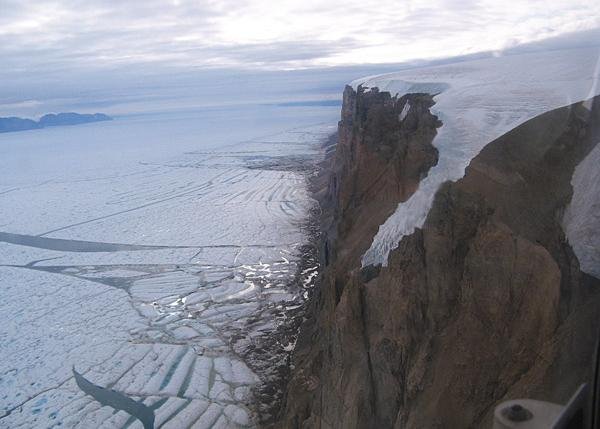NEWARK, Del., July 17 (UPI) -- An island of ice twice the size of Manhattan broke off from Greenland's largest glaciers Monday, a U.S. researcher reports.
University of Delaware ocean scientist Andread Muenchow blogged the "calving" from the Petermann Glacier, one of the two largest glaciers left in Greenland connecting the great Greenland ice sheet with the ocean via a floating ice shelf.















